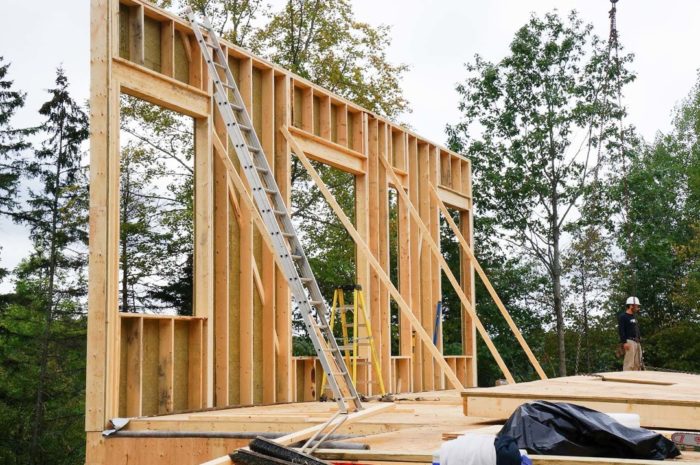
Image Credit: All photos: Craig Anderson
Image Credit: All photos: Craig Anderson Basement plan.
Image Credit: Plans and sections: Mach Design, Ottawa First floor plan. Wall section (south). Wall section (east).
This is the second in a series of posts by Craig Anderson describing the off-the-grid house he built with his wife France-Pascale Ménard near Low, Québec. The first installment was titled Building an Off-Grid Home in Canada. Craig writes about the “Seven Hills Project” in a blog called Sunshine Saved.
When first looking at how much insulation to put into the house, I looked to the Passive House certification system. To get Passive House certification, there is a hard limit on the amount of energy needed to heat and cool a space of 15 kilowatt hours per square meter per year (kWh/m²/a), which works out to about 1/10th the amount that a typical house uses.
It turns out this is a very difficult bar to meet in cold climates, with the amount of insulation required being simply immense. With a house like ours it would have required walls roughly 2 feet thick (instead of the 6 to 8 inches typical in current construction). After doing a bit of math, it didn’t seem like this was an investment that would ever pay off, so instead we only took inspiration from the Passive House ideals, rather than attempting to meet them. Trying to balance cost and efficiency, we still ended up with a wall assembly roughly 15 inches thick
Another heuristic that I picked up from our architect is the 60-40-30-20 rule. This suggests putting R-60 of insulation in the ceiling, R-40 in above-grade walls, R-30 in basement walls, and R-20 underneath the basement slab, which is much closer to what we actually did. I’ve also heard of concepts similar to this called “the pretty good house.” While a house like this won’t reach that Passive House standard, it will still cut by half or two-thirds the amount of energy needed to heat and cool a home.
An R-80 ceiling
For those of you familiar with reading building plans, I have posted the final house plans with all building details. Plans seem to be shared only infrequently, but I am not too concerned about someone copying our home; if you would like to borrow any details, please do so.
Starting from the top, we built a cathedral ceiling using a single pitched shed-style roof. We used manufactured trusses with 3 feet of depth built in for insulation. Into this space a layer of 3½-inch Roxul mineral wool batt insulation was laid down covering the entire bottom of the ceiling cavity. Loose cellulose insulation was then blown in above, mostly filling the space, reaching an estimated R-80 for the ceiling.
It was originally specified to be R-60, but there was enough space for more insulation, and cellulose is relatively cheap and easy to install, so a last-minute upgrade was done during installation. With the energy modeling that we did after the house was complete, it turns out that the R-60 would have been sufficient, as only a very small proportion of the heat loss would have been through the roof even at R-60.
Beneath the rest of the insulation was a standard polyethylene air and vapor barrier, preventing air movement and controlling vapor movement. The final interior layer is veneer plywood sheets that make for a very attractive ceiling to the room below.
Double-stud walls
For the above-grade walls, we ended up using a double-stud wall assembly. The structure of the house is built with 2×8 lumber, which allowed both for necessary support on the tall wall in the upstairs, as well as providing a deep space for insulation. The bays in this wall were filled with Roxul batt insulation, a mineral wool product. Mineral wool is a quite well regarded insulation, as it is very pest, water, and fire resistant, is easy to install, and holds its shape well, all leading to good long service.
On the inside of this 2×8 wall is the polyethylene air/vapor barrier. Inside of that is a 2×4 utility wall, holding all of the electrical, plumbing, and data cabling. This wall is also insulated with Roxul insulation. Finally, a standard layer of sheetrock provides the interior walls.
A big advantage of the utility wall is that all of the openings that need to be cut, for outlets, fixtures, etc., don’t need to punch holes in the air barrier, keeping the air tightness higher. Outside of the 2×8 wall, there is a layer of plywood, then 1 1/2 inches of Roxul ComfortBoard, which is very similar to the batt insulation we used, but a firmer and coming in sheets.
Wrapping all the walls in mineral wool limits thermal bridging, where heat would pass through the wood framing (which is a poor insulator compared to the insulation it holds in place).
Finally, the exterior has 1×3 wooden strapping to allow for air circulation and water drainage, on which Hardie fiber cement board is mounted. Altogether these walls are a nominal R-47.
Basement insulation
For below-grade walls, the final assembly is a simpler one. From the outside, there is a 2-inch thick layer of vertical rigid EPS (expanded polystyrene) foam, with a 4-foot-wide horizontal skirt of the same material buried approximately 1 foot below the outside ground surface. This skirt reduces the ability of cold winter temperatures from passing through the soil to reach the lower walls and foundation of the house. Essentially, the cold is slowed down as it has to go through or around that skirt.
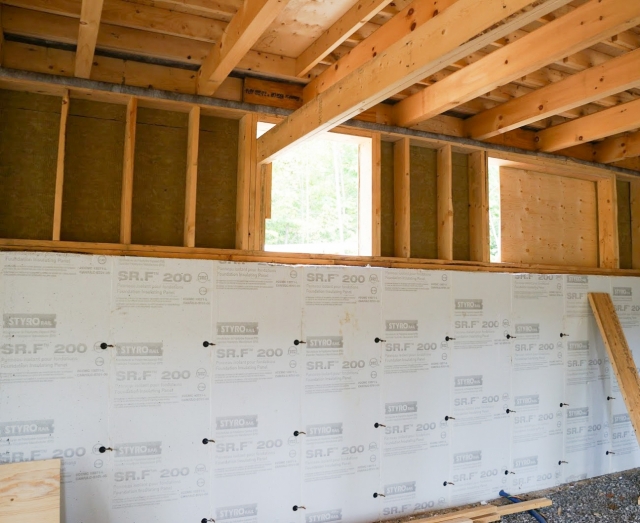
Inside the 2 inches of foam there is a waterproof membrane stuck to an 8-inch-thick poured concrete wall. Inside of the concrete wall is a 4-inch layer of EPS, with a polyethylene barrier to the inside. The final layer is the same 2×4 utility wall mentioned above, covered by drywall. This total assembly measures R-40. Underneath the basement concrete slab are 4 inches of rigid foam (R-16).
A couple of other finishing details really help to reduce the basement heating loads. First, the basement concrete slab is actually encased on three sides by foam, coming down from the walls, and then with the foam underneath — it essentially looks like a foam bathtub. This significantly reduces thermal bridging, making the diffusion of heat into the ground or concrete walls slower.
Triple-pane windows
All the windows in the house have fiberglass frames, are triple-paned with argon fill, and have an insulating value of roughly R-5. The windows facing south are all chosen to allow in more of the sun’s heat (a higher solar heat gain coefficient, or SHGC), whereas windows facing all other directions have a low SHGC.
The difference between them is that the high-gain windows allow in approximately 50% of the sun’s heat, whereas the low SHGC windows let in only about 30%. The interesting thing about passive solar design is that much of the heating load is carried by the heat coming in the windows, with energy modeling suggesting that about 30% of the house’s total heat needs are being provided by the sun shining through the windows.
Reducing air leakage
The final thing that always needs to be mentioned when discussing a building envelope is airtightness. There used to be ideas floating around that a house needed to “breathe,” but these ideas have long since been discredited, and high quality builders now look to build houses as tightly as possible, then actively bring in fresh air with a device like a heat-recovery ventilator (HRV).
Airtightness is measured in air changes per hour (ach), which measures the total volume of air inside a building, and how many times in one hour that this much air would be replaced when a home is slightly depressurized with a big fan (for a pressure difference between inside and outside of 50 pascals, or ach50). Old, leaky homes may have a number like 10 ach50 (or even much higher), meaning that the air inside is replaced by outside air about 10 times each hour when depressurized.
Passive house rules require 0.6 ach50. Our house, with the polyethylene barrier mentioned multiple times above, measured at 1.47 ach50 when the house was half done, the outer 2×8 wall in place with the air barrier. The house is probably much tighter than that now with the utility wall, sheetrock, paint, and caulking all in place, but we never quite got around to getting a second measurement after the house was complete.
(Our builder, Stephane Charette of Bala Structures, created a time-lapse video (and accompanying vocals) of the walls and roof trusses being set into place with a crane — it will give you a good idea of how the house was assembled.)
Hindsight is always 20-20
There is a lot of interesting work going on by builders trying quite a lot of ways to build very high-efficiency homes that are simpler and cheaper than the methods we used. Even now, less than two years after our house was completed, there are already some things that we could change.
One example comes from Ecohome, where our LEED certifier Mike Reynolds works. Ecohome’s recent Edelweiss House is significantly more efficient than our home, and also was cheaper to build. It’s constructed with only a standard 2×6 wall and lots of exterior insulation. Needless to say, though, the house we have built is a very good one. There are many good ways to put together a high-performance building envelope.
Weekly Newsletter
Get building science and energy efficiency advice, plus special offers, in your inbox.





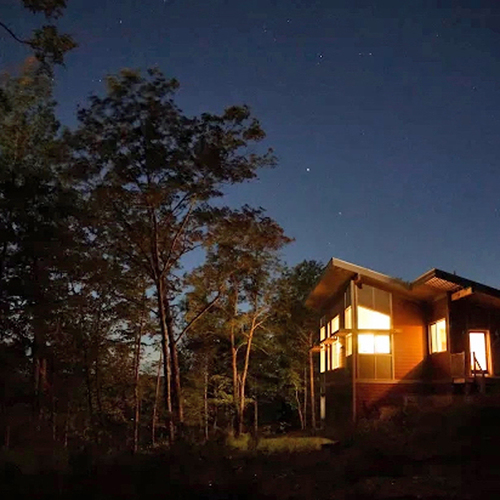
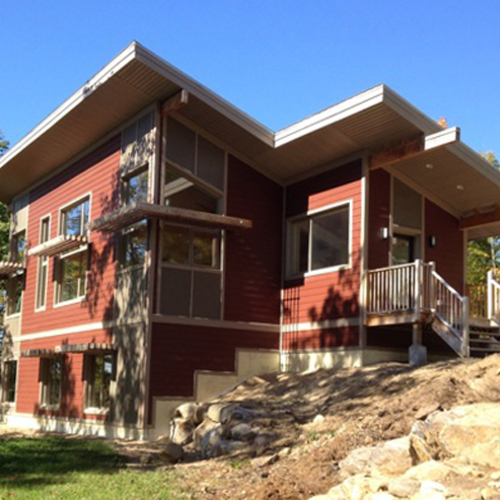

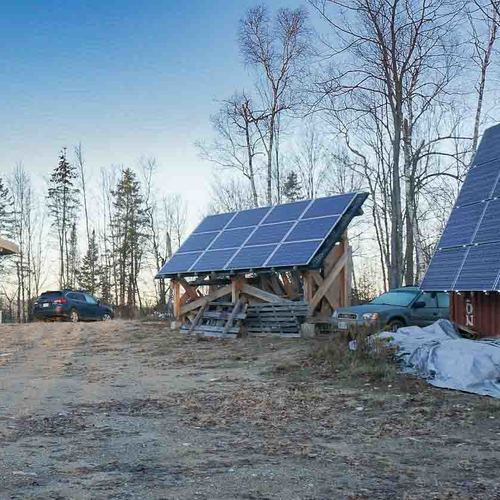






0 Comments
Log in or create an account to post a comment.
Sign up Log in